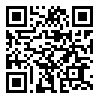Volume 2, Issue 1 (january 2018)
AOH 2018, 2(1): 75-79 |
Back to browse issues page
Download citation:
BibTeX | RIS | EndNote | Medlars | ProCite | Reference Manager | RefWorks
Send citation to:



BibTeX | RIS | EndNote | Medlars | ProCite | Reference Manager | RefWorks
Send citation to:
Azimi N, Hesam G, Khosravi F, Motamedzadeh M, Moradpour Z. Relationship between Mental Workload Index and Work Ability Index in a Food Industry. AOH 2018; 2 (1) :75-79
URL: http://aoh.ssu.ac.ir/article-1-59-en.html
URL: http://aoh.ssu.ac.ir/article-1-59-en.html
1- MSc student of Occupational Hygiene, School of Public Health, Hamadan University of Medical Sciences, Hamadan, Iran
2- Department of Occupational Health Engineering, Occupational and Environmental Health Research Center, Shahroud University of Medical Sciences, Shahroud, Iran
3- Department of Biostatistics, Occupational and Environmental Health Research Center, Shahroud University of Medical Sciences, Shahroud, Iran
4- Associate Professor, Ergonomics Department, School of Health and Research Center for Health Sciences, Hamadan University of Medical Sciences, Hamadan, Iran
5- Department of Occupational Health Engineering, Occupational and Environmental Health Research Center, Shahroud University of Medical Sciences, Shahroud, Iran ,zm.moradpoor1989@yahoo.com
2- Department of Occupational Health Engineering, Occupational and Environmental Health Research Center, Shahroud University of Medical Sciences, Shahroud, Iran
3- Department of Biostatistics, Occupational and Environmental Health Research Center, Shahroud University of Medical Sciences, Shahroud, Iran
4- Associate Professor, Ergonomics Department, School of Health and Research Center for Health Sciences, Hamadan University of Medical Sciences, Hamadan, Iran
5- Department of Occupational Health Engineering, Occupational and Environmental Health Research Center, Shahroud University of Medical Sciences, Shahroud, Iran ,
Abstract: (3990 Views)
Background: Spending a significant part of the daily in workplace has led to reduction in the time of rest and recreation of people. Therefore, considering the importance of the potential effect of mental work load on work ability, the present study was conducted to determine the relationship between mental workload and work ability in workers of a food industry. Methods: This cross-sectional study performed on 40 workers in a food industry in Qom province, Iran in 2017. Three demographic questionnaires, NASA-Tlx mental workload index and work ability index (WAI) were used for data collection. Finally, data were analyzed using SPSS software. Results: The results obtained from examining the relationship between work ability index and mental workload index in the studied industry showed high workload index score, however, there was no significant relationship between these two indexes (P = 0.07). results of regression analysis showed that only age of people has a significant relationship with the results of WAI. Conclusion: The mental workload index among workers of food industry was very high, which can be attributed to strict supervision due to the importance of food hygiene. High mental workload can affect human error and work efficiency of the worker.
Type of Study: Research |
Subject:
Special
Received: 2018/01/10 | Accepted: 2018/01/10 | Published: 2018/01/10
Received: 2018/01/10 | Accepted: 2018/01/10 | Published: 2018/01/10
Send email to the article author
| Rights and permissions | |
 |
This work is licensed under a Creative Commons Attribution-NonCommercial 4.0 International License. |





